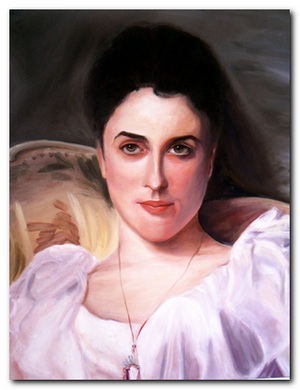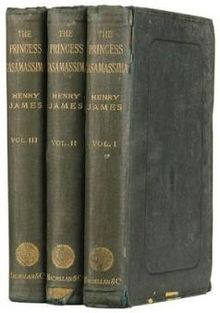tutorial, commentary, study resources, and web links
The Next Time (1895) comes from volume nine of the Complete Tales of Henry James featuring stories he composed between 1892 and 1898. The twelve volume set was issued in the UK as a very handsome edition by Rupert Hart-Davis between 1962 and 1964, edited and with introductions by Leon Edel. But for reasons I have never been able to discover, volumes nine and ten of this edition are now rare collector’s items.

Henry James – portrait by John Singer Sargeant
My reading of this story was from the print-on-demand paperback reprint from Digireads.com. These editions are clearly produced by optical character recognition (OCR) scans of some original text, and are flawed by occasional mistakes in spelling and punctuation. A much more reliable source is the Library of America edition, the four volumes of which are fully edited to scholarly standards.
The other late and great stories in this volume include the so-called ‘ghost story’ Owen Wingrave (1892), his satires of literay life The Coxon Fund (1894) and The Death of the Lion (1894), and his puzzle of literary interpretation The Figure in the Carpet (1896).
The Next Time – critical commentary
The main theme
There are two issues at play in the story that James treated extensively in his shorter works around this period at the end of the century. One is the reputation and standing of the creative artist – in this instance of being under-appreciated except to a discerning few. The second is the commercial imperatives of the literary marketplace which always seem to be in conflict with the very artistic integrity from which they draw their kudos. One of his next stories John Delavoy (1898) returned to the same issues three years later.
Ray Limbert fails as a journalist and an editor because his artistic tastes are too refined for The Blackport Beacon and despite his own wishes to court popularity and commercial success, he cannot help himself producing work which is high quality.
We are given to believe that whilst his prosperity gradually declines (he is forced to leave London and live in the country) his artistic achievements continue to soar, even if they are only appreciated by the narrator. In other words he is commercially unsuccessful, but he continues to write masterpieces.
The structure
The story is told in five numbered sections which follow a straightforward chronological sequence – from the narrator’s securing a position for Limbert on the Beacon up to the point of the novelist’s death. But these sections are preceded rather curiously by an un-numbered introduction that deals with events that take place eighteen years later. Jane Highmore asks the narrator to write a critique of her work which will put her on a par with Limbert, whose work has been a highly revered flop. “She yearned to be, like Limbert, but of course only once, an exquisite failure”. The irony here is that she is in fact a commercially successful novelist, but she is seeking the distinction of being amongst the neglected and unsucceful elite.
This passage is curious in the sense that it is not, nor indeed cannot be referred to again – because it happens beyond the time frame of the main narrative. But it is connected thematically with the issue of the role of the narrator. Jane Highmore selects the narrator to write an article about her because he has established a reputation as a critic with a talent for spoiling the chances of those he writes about.
She meant that of old it had always appeared to be the fine blade, as some one had hyperbolically called it, of my particular opinion that snapped the silken thread by which Limbert’s chance in the market was wont to hang. She meant that my favour was compromising, that my praise was fatal.
The un-named narrator
As in many of the stories he wrote around this time, James used the device of an un-named narrator to deliver the events. In some instances this allowed him to bring into play the literary device of the unreliable narrator – the person telling the tale whose word we cannot necessarily trust, who gives what is obviously a distorted account of events, or who interprets them in a manner which is at variance with what is obvious to the reader.
James’s skill lies in providing the reader with sufficient evidence – almost behind his narrator’s back, as it were – to make an alternative judgement on what is happening. The Turn of the Screw and The Aspern Papers are well-known cases in point.
But here there is no real ironic distance between the narrator and the reader. We are invited to take the narrator’s account at face value, and therefore we must take it on trust that Ray Limbert’s novels are as accomplished as we are told.
This is one of the reasons why the story is less satisfying than it otherwise might be – because the narrator gives us no concrete examples of Limbert’s talent. He describes the achievement of The Middle Key and The Hidden Heart entirely in extended metaphors of approval:
It happens not to be given to Limbert to fail. He belongs to the heights—he breathes there. he lives there, and it’s accordingly to the heights I must ascend.
And yet in fact Limbert loses both his job on the Beacon and as magazine editor because of his association with the narrator, and he even seems to be aware of his negative influence when he implores him not to write an article praising his work. “My dear fellow, I think I’ve done it this time, if you’ll only keep quiet.”
Is the narrator therefore more unreliable than is at first apparent? Certainly there is every conscious intention in the Notebooks that James intended this.
I just, after all, dish him …and on my head is the responsibility. I am the blighting critic.
It’s interesting to note, a propos the un-named narrator, that James identifies completely with him in the notes, writing in the first person “I am a critic who doesn’t sell, ie, whose writing is too good—attracts no attention whatever.” he makes no distinction at all between himself and his narrator.
Certainly the narrator’s actions result in Limbert being unappreciated and his fortunes going into decline. And yet there is nothing else in the text of the story or the Notebooks entries to suggest that James intended us to see the narrator as a malevolent force. But that doesn’t mean it isn’t open to us to do so.
A secondary theme
In addition to the main theme of literary reputations, the story also deals with the issue of tensions between Art and domestic life which were a recurrent problem for James. The question was – to marry or to stay single?
Ray Limbert cannot afford to marry Maude without an income to provide for her. But the Beacon journalism pays enough for him to finish his novel The Major Key, against which he secures an advance. This gives him the wherewithal to get married, after which Maude produces three children and becomes an invalid.
The picture of Limbert’s domestic life is clearly one conjured up in the imagination of any bachelor hovering between marriage and independence, and looking for reasons to justify selecting the latter
Limbert’s study was behind the dining-room, with folding doors not impervious to the clatter of the children’s tea … It was Upstairs that the thunder gathered … that Mrs Limbert had her babies and her headaches, that bells forever jangled at the maids, that everything imperative in short took place—everything that he had somehow, pen in hand, to meet and dispose of in the little room on the garden-level.
His lack of commercial success leads to that picture growing even worse. He lives beyond his means and is forced to leave London to live “mainly in a village on the edge of a goose green” where he is burdened with yet another two children.
This is clearly what Cyril Connolly called ‘the pram in the hallway’ – that is, family life as a distracting and burdensome brake on artistic freedom and creativity. Limbert does in fact keep writing at his unfinished and ironically entitles novel Derogation [‘lessening of authority, position, and dignity’] but it is this which brings his life to an end.
It’s as if James were conjuring up scenarios for himself, to try out or justify his own decision to remain a bachelor. This was something he managed very successfully, continuing to produce great fiction almost to the end of his life. Some critics observe that he seemed to do this at the expense of engagement in emotional life – but that is a private rather than an artistic matter.
The Next Time – study resources
![]() The Complete Works of Henry James – Kindle edition – Amazon UK
The Complete Works of Henry James – Kindle edition – Amazon UK
![]() The Complete Works of Henry James – Kindle edition – Amazon US
The Complete Works of Henry James – Kindle edition – Amazon US
![]() Complete Stories 1892—1898 – Library of America – Amazon UK
Complete Stories 1892—1898 – Library of America – Amazon UK
![]() Complete Stories 1892—1898 – Library of America – Amazon US
Complete Stories 1892—1898 – Library of America – Amazon US
![]() The Complete Tales (Vol 9) – Paperback edition – Amazon UK
The Complete Tales (Vol 9) – Paperback edition – Amazon UK
![]() Selected Tales – Penguin Classics edition – Amazon UK
Selected Tales – Penguin Classics edition – Amazon UK
![]() The Next Time – eBook formats at Project Gutenberg
The Next Time – eBook formats at Project Gutenberg
![]() The Cambridge Companion to Henry James – Amazon UK
The Cambridge Companion to Henry James – Amazon UK
![]() Henry James at Wikipedia – biographical notes, links
Henry James at Wikipedia – biographical notes, links
![]() Henry James at Mantex – tutorials, biography, study resources
Henry James at Mantex – tutorials, biography, study resources
The Next Time – plot summary
Preface. A literary critic and narrator of the story is asked by a successful popular novelist June Highmore to write an article about her that will make her famous, even if she is regarded as an artistic failure.
Part I. The narrator goes back in time to give an account of how at June Highmore’s request he secured a journalist’s job for her brother-in-law Ray Limbert, writing for a northern newspaper the Blackport Beacon. Limbert is an aspiring novelist who needs the income from journalism in order to get married. The narrator publishes a collection of literary impressions, and Limbert puffs it in the Beacon, from which he is sacked for not being chatty enough.
Part II. Limbert subsequently finds employment in occasional journalism whilst completing his next novel, The Major Key. The narrator vouches for its quality to a publisher, who releases it as a magazine serial. When it is published, the novel is a commercial flop, and Limbert becomes burdened with domestic responsibilities, three children, and an ailing wife.
Part III. Limbert is suddenly offered an editorial job on a literary magazine for a one year trial period. He has secretly run up debts by living beyond his means. He decides to become a successful writer – by which he means to make money. The narrator fears that he will think less of him if he succeeds, but supports him in his hidden plan to lower the standards of the magazine. Limbert publishes a new novel, which the narrator thinks is very good quality work.
Part IV. However, Limbert is sacked form the magazine because he has not cultivated the public, but has published his friend the narrator on a regular basis. He is replaced on the magazine by ‘a lady humorist’.
Part V. He is forced to move out of London and live in the country on reduced means. The narrator gradually realises that he is incapable of being commercially successful. Limbert continues to produce worthwhile work, but eventually dies in obscurity.
Principal characters
| I | the un-named narrator, a writer and literary critic |
| Mrs Jane Highmore | a successful popular lady novelist |
| Cecil Highmore | her strict and practical husband |
| Ray Limbert | a journalist and novelist |
| Maud Stannace | Limbert’s wife |
| The Blackport Beacon | a northern newspaper with London correspondents |
| Mr Bousefield | the editor of a monthly literary magazine |
| Minnie Meadows | a lady humorist |

Henry James’s study
Further reading
Biographical
![]() Theodora Bosanquet, Henry James at Work, University of Michigan Press, 2007.
Theodora Bosanquet, Henry James at Work, University of Michigan Press, 2007.
![]() F.W. Dupee, Henry James: Autobiography, Princeton University Press, 1983.
F.W. Dupee, Henry James: Autobiography, Princeton University Press, 1983.
![]() Leon Edel, Henry James: A Life, HarperCollins, 1985.
Leon Edel, Henry James: A Life, HarperCollins, 1985.
![]() Philip Horne (ed), Henry James: A Life in Letters, Viking/Allen Lane, 1999.
Philip Horne (ed), Henry James: A Life in Letters, Viking/Allen Lane, 1999.
![]() Henry James, The Letters of Henry James, Adamant Media Corporation, 2001.
Henry James, The Letters of Henry James, Adamant Media Corporation, 2001.
![]() Fred Kaplan, Henry James: The Imagination of Genius, Johns Hopkins University Press, 1999
Fred Kaplan, Henry James: The Imagination of Genius, Johns Hopkins University Press, 1999
![]() F.O. Matthieson (ed), The Notebooks of Henry James, Oxford University Press, 1988.
F.O. Matthieson (ed), The Notebooks of Henry James, Oxford University Press, 1988.
Critical commentary
![]() Elizabeth Allen, A Woman’s Place in the Novels of Henry James London: Macmillan Press, 1983.
Elizabeth Allen, A Woman’s Place in the Novels of Henry James London: Macmillan Press, 1983.
![]() Ian F.A. Bell, Henry James and the Past, London: Palgrave Macmillan, 1993.
Ian F.A. Bell, Henry James and the Past, London: Palgrave Macmillan, 1993.
![]() Millicent Bell, Meaning in Henry James, Cambridge (MA): Harvard University Press, 1993.
Millicent Bell, Meaning in Henry James, Cambridge (MA): Harvard University Press, 1993.
![]() Harold Bloom (ed), Modern Critical Views: Henry James, Chelsea House Publishers, 1991.
Harold Bloom (ed), Modern Critical Views: Henry James, Chelsea House Publishers, 1991.
![]() Kirstin Boudreau, Henry James’s Narrative Technique, Macmillan, 2010.
Kirstin Boudreau, Henry James’s Narrative Technique, Macmillan, 2010.
![]() J. Donald Crowley and Richard A. Hocks (eds), The Wings of the Dove, New York: W.W. Norton and Company, 1978.
J. Donald Crowley and Richard A. Hocks (eds), The Wings of the Dove, New York: W.W. Norton and Company, 1978.
![]() Victoria Coulson, Henry James, Women and Realism, Cambridge University Press, 2009.
Victoria Coulson, Henry James, Women and Realism, Cambridge University Press, 2009.
![]() Daniel Mark Fogel, A Companion to Henry James Studies, Greenwood Press, 1993.
Daniel Mark Fogel, A Companion to Henry James Studies, Greenwood Press, 1993.
![]() Virginia C. Fowler, Henry James’s American Girl: The Embroidery on the Canvas, Madison (Wis): University of Wisconsin Press, 1984.
Virginia C. Fowler, Henry James’s American Girl: The Embroidery on the Canvas, Madison (Wis): University of Wisconsin Press, 1984.
![]() Jonathan Freedman, The Cambridge Companion to Henry James, Cambridge University Press, 1998.
Jonathan Freedman, The Cambridge Companion to Henry James, Cambridge University Press, 1998.
![]() Judith Fryer, The Faces of Eve: Women in the Nineteenth Century American Novel, Oxford: Oxford University Press, 1976
Judith Fryer, The Faces of Eve: Women in the Nineteenth Century American Novel, Oxford: Oxford University Press, 1976
![]() Roger Gard (ed), Henry James: The Critical Heritage, London: Routledge, 1968.
Roger Gard (ed), Henry James: The Critical Heritage, London: Routledge, 1968.
![]() Tessa Hadley, Henry James and the Imagination of Pleasure, Cambridge University Press, 2009.
Tessa Hadley, Henry James and the Imagination of Pleasure, Cambridge University Press, 2009.
![]() Barbara Hardy, Henry James: The Later Writing (Writers & Their Work), Northcote House Publishers, 1996.
Barbara Hardy, Henry James: The Later Writing (Writers & Their Work), Northcote House Publishers, 1996.
![]() Richard A. Hocks, Henry James: A study of the short fiction, New York: Twayne Publishers, 1990.
Richard A. Hocks, Henry James: A study of the short fiction, New York: Twayne Publishers, 1990.
![]() Donatella Izzo, Portraying the Lady: Technologies of Gender in the Short Stories of Henry James, University of Nebraska Press, 2002.
Donatella Izzo, Portraying the Lady: Technologies of Gender in the Short Stories of Henry James, University of Nebraska Press, 2002.
![]() Colin Meissner, Henry James and the Language of Experience, Cambridge University Press, 2009
Colin Meissner, Henry James and the Language of Experience, Cambridge University Press, 2009
![]() John Pearson (ed), The Prefaces of Henry James, Pennsylvania State University Press, 1993.
John Pearson (ed), The Prefaces of Henry James, Pennsylvania State University Press, 1993.
![]() Richard Poirer, The Comic Sense of Henry James, Oxford: Oxford University Press, 1967.
Richard Poirer, The Comic Sense of Henry James, Oxford: Oxford University Press, 1967.
![]() Hugh Stevens, Henry James and Sexuality, Cambridge University Press, 1998.
Hugh Stevens, Henry James and Sexuality, Cambridge University Press, 1998.
![]() Merle A. Williams, Henry James and the Philosophical Novel, Cambridge University Press, 1993.
Merle A. Williams, Henry James and the Philosophical Novel, Cambridge University Press, 1993.
![]() Judith Woolf, Henry James: The Major Novels, Cambridge University Press, 1991.
Judith Woolf, Henry James: The Major Novels, Cambridge University Press, 1991.
![]() Ruth Yeazell (ed), Henry James: A Collection of Critical Essays, Longmans, 1994.
Ruth Yeazell (ed), Henry James: A Collection of Critical Essays, Longmans, 1994.
Other works by Henry James
 Washington Square (1880) is a superb early short novel, It’s the tale of a young girl whose future happiness is being controlled by her strict authoritarian (but rather witty) father. She is rather reserved, but has a handsome young suitor. However, her father disapproves of him, seeing him as an opportunist and a fortune hunter. There is a battle of wills – all conducted within the confines of their elegant New York town house. Who wins out in the end? You will probably be surprised by the outcome. This is a masterpiece of social commentary, offering a sensitive picture of a young woman’s life.
Washington Square (1880) is a superb early short novel, It’s the tale of a young girl whose future happiness is being controlled by her strict authoritarian (but rather witty) father. She is rather reserved, but has a handsome young suitor. However, her father disapproves of him, seeing him as an opportunist and a fortune hunter. There is a battle of wills – all conducted within the confines of their elegant New York town house. Who wins out in the end? You will probably be surprised by the outcome. This is a masterpiece of social commentary, offering a sensitive picture of a young woman’s life.
![]() Buy the book from Amazon UK
Buy the book from Amazon UK
![]() Buy the book from Amazon US
Buy the book from Amazon US
 The Aspern Papers (1888) is a psychological drama set in Venice which centres on the tussle for control of a great writer’s correspondence. An elderly lady, ex-lover of the writer, seeks a husband for her daughter. But the potential purchaser of the papers is a dedicated bachelor. Money is also at stake – but of course not discussed overtly. There is a refined battle of wills between them. Who will win in the end? As usual, James keeps the reader guessing. The novella is a masterpiece of subtle narration, with an ironic twist in its outcome. This collection of stories also includes three of his accomplished long short stories – The Private Life, The Middle Years, and The Death of the Lion.
The Aspern Papers (1888) is a psychological drama set in Venice which centres on the tussle for control of a great writer’s correspondence. An elderly lady, ex-lover of the writer, seeks a husband for her daughter. But the potential purchaser of the papers is a dedicated bachelor. Money is also at stake – but of course not discussed overtly. There is a refined battle of wills between them. Who will win in the end? As usual, James keeps the reader guessing. The novella is a masterpiece of subtle narration, with an ironic twist in its outcome. This collection of stories also includes three of his accomplished long short stories – The Private Life, The Middle Years, and The Death of the Lion.
![]() Buy the book from Amazon UK
Buy the book from Amazon UK
![]() Buy the book from Amazon US
Buy the book from Amazon US
 The Spoils of Poynton (1896) is a short novel which centres on the contents of a country house, and the question of who is the most desirable person to inherit it via marriage. The owner Mrs Gereth is being forced to leave her home to make way for her son and his greedy and uncultured fiancee. Mrs Gereth develops a subtle plan to take as many of the house’s priceless furnishings with her as possible. But things do not go quite according to plan. There are some very witty social ironies, and a contest of wills which matches nouveau-riche greed against high principles. There’s also a spectacular finale in which nobody wins out.
The Spoils of Poynton (1896) is a short novel which centres on the contents of a country house, and the question of who is the most desirable person to inherit it via marriage. The owner Mrs Gereth is being forced to leave her home to make way for her son and his greedy and uncultured fiancee. Mrs Gereth develops a subtle plan to take as many of the house’s priceless furnishings with her as possible. But things do not go quite according to plan. There are some very witty social ironies, and a contest of wills which matches nouveau-riche greed against high principles. There’s also a spectacular finale in which nobody wins out.
![]() Buy the book from Amazon UK
Buy the book from Amazon UK
![]() Buy the book from Amazon US
Buy the book from Amazon US
Henry James – web links
![]() Henry James at Mantex
Henry James at Mantex
Biographical notes, study guides, tutorials on the Complete Tales, book reviews. bibliographies, and web links.
![]() The Complete Works
The Complete Works
Sixty books in one 13.5 MB Kindle eBook download for £1.92 at Amazon.co.uk. The complete novels, stories, travel writing, and prefaces. Also includes his autobiographies, plays, and literary criticism – with illustrations.
![]() The Ladder – a Henry James website
The Ladder – a Henry James website
A collection of eTexts of the tales, novels, plays, and prefaces – with links to available free eTexts at Project Gutenberg and elsewhere.
![]() A Hyper-Concordance to the Works
A Hyper-Concordance to the Works
Japanese-based online research tool that locates the use of any word or phrase in context. Find that illusive quotable phrase.
![]() The Henry James Resource Center
The Henry James Resource Center
A web site with biography, bibliographies, adaptations, archival resources, suggested reading, and recent scholarship.
![]() Online Books Page
Online Books Page
A collection of online texts, including novels, stories, travel writing, literary criticism, and letters.
![]() Henry James at Project Gutenberg
Henry James at Project Gutenberg
A major collection of eTexts, available in a variety of eBook formats.
![]() The Complete Letters
The Complete Letters
Archive of the complete correspondence (1855-1878) work in progress – published by the University of Nebraska Press.
![]() The Scholar’s Guide to Web Sites
The Scholar’s Guide to Web Sites
An old-fashioned but major jumpstation – a website of websites and resouces.
![]() Henry James – The Complete Tales
Henry James – The Complete Tales
Tutorials on the complete collection of over one hundred tales, novellas, and short stories.
![]() Henry James on the Internet Movie Database
Henry James on the Internet Movie Database
Adaptations of James’s novels and stories for the cinema and television – in various languages. Full details of directors and actors, production features, film reviews, box office, and even quizzes.
© Roy Johnson 2012
More tales by James
More on literature
More on the novella
More on literary studies
More on short stories

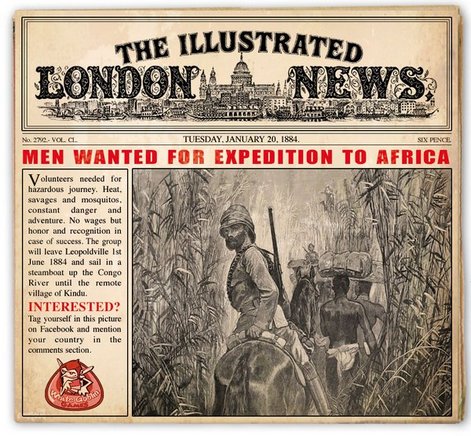
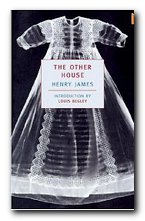
 Daisy Miller
Daisy Miller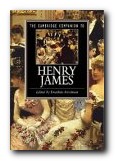 The Cambridge Companion to Henry James is intended to provide a critical introduction to James’ work. Throughout the major critical shifts of the past fifty years, and despite suspicions of the traditional high literary culture that was James’ milieu, as a writer he has retained a powerful hold on readers and critics alike. All essays are written at a level free from technical jargon, designed to promote accessibility to the study of James and his work.
The Cambridge Companion to Henry James is intended to provide a critical introduction to James’ work. Throughout the major critical shifts of the past fifty years, and despite suspicions of the traditional high literary culture that was James’ milieu, as a writer he has retained a powerful hold on readers and critics alike. All essays are written at a level free from technical jargon, designed to promote accessibility to the study of James and his work.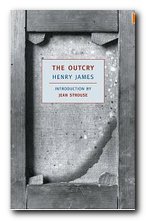
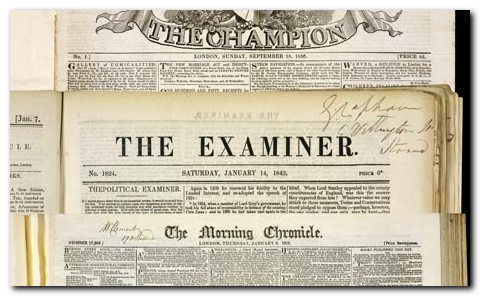

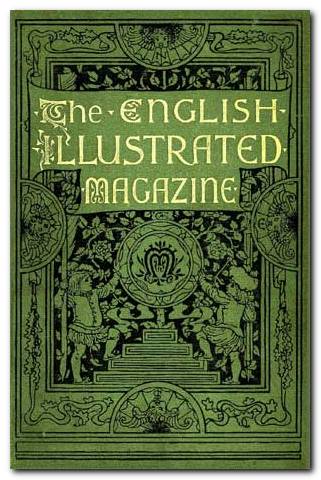

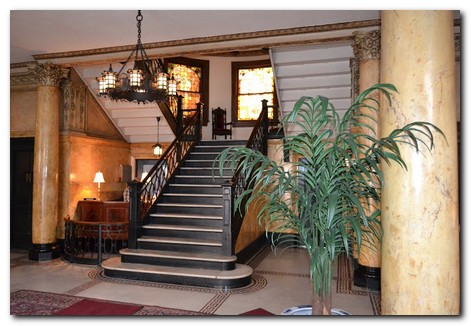
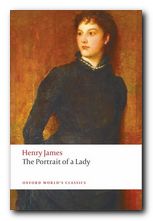 With her large legacy, Isabel travels the Continent and meets an American expatriate, Gilbert Osmond, in Florence. Although Isabel had previously rejected both Warburton and Goodwood, she accepts Osmond’s proposal of marriage. She is unaware that this marriage has been actively promoted by the accomplished but untrustworthy Madame Merle, another American expatriate, whom Isabel had met at the Touchetts’ estate.
With her large legacy, Isabel travels the Continent and meets an American expatriate, Gilbert Osmond, in Florence. Although Isabel had previously rejected both Warburton and Goodwood, she accepts Osmond’s proposal of marriage. She is unaware that this marriage has been actively promoted by the accomplished but untrustworthy Madame Merle, another American expatriate, whom Isabel had met at the Touchetts’ estate. The Bostonians
The Bostonians What Masie Knew
What Masie Knew The Ambassadors
The Ambassadors